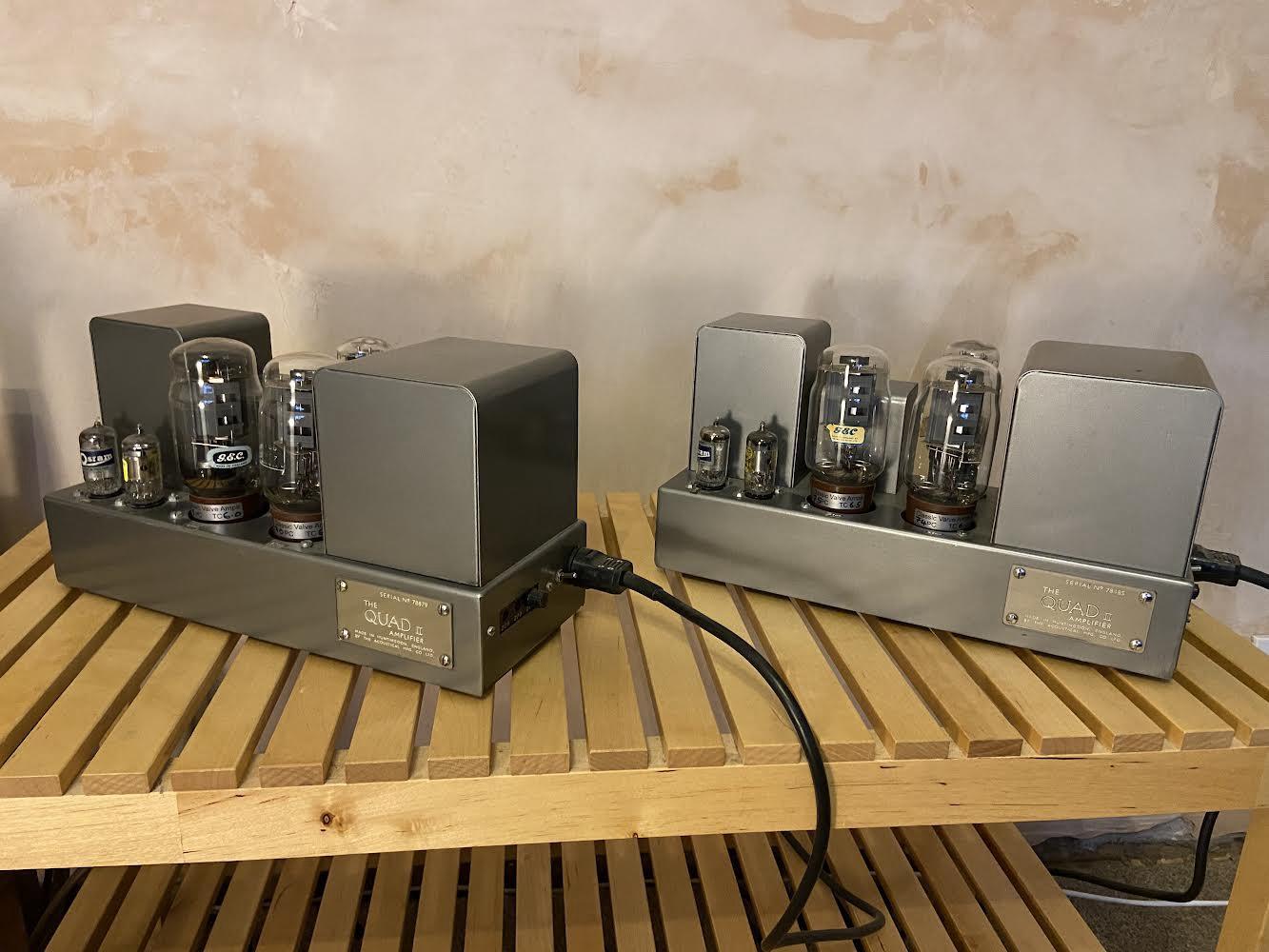Hi All
I own a pair of the Chinese manufactured QUAD II Classic monoblocs. To my eyes they are actually well built especially when compared to some of the stuff that comes from that part of the world. The basic circuit is the same as the original QUAD II with the exception of some capacitor values used in the power supply and a couple of extra components to confirm to modern codes and standards.
On my units, the first PSU smoothing capacitor is 82uf / 500V where the original was 16uf / 450V, the second PSU smoothing Capacitor fitted after the choke is 150uf / 500V where the original circuit called up 16uf / 450V. The voltage rating on the cathode capacitor has also been increased, QUAD now use a 47uf / 450V rather than the original 25uf / 25V, it's overkill on the voltage rating but it won't hurt anything. There is also a 100pf capacitor added across the control grid to earth on both of the KT66's This should improve noise rejection and is probably driven modern EU regulations around noise suppression and susceptibility to external interference. Also, on the modern units the output transformer appears to be optimised for an eight-ohm load (check out Art Dudley's review in Stereophiles for a full set of measurements). If Tim "de-P" did have any input into this circuit it would only have been how to make it meet modern EU standards, the basic circuit is original, and this is a good thing.
My units have been quite reliable and perform very well the only issue I have ever had is a failure of One KT66 after transporting the units, a fault with the valve rather than the amplifier itself along with a carless removalist, even though the units were packaged in the original boxes. The failed tube was not one of the original QUAD branded tubes but a JJ's KT66 as the original QUAD branded tubes are now boxed up and in storage with only a few hundred hours of usage. The QUAD circuit is pretty easy on the output tube and many thousands of hours can be expected from this circuit, quite a few original QUADs are still using the output tubes that were fitted when the amplifiers left Huntingdon.
However, I have heard that some reliability issues are starting to appear in the later built units. My units are the gold-beige colour and have serial numbers 0415 and 0416, they are a reasonably early build. I believe at this stage IAG (who now own the QUAD name) had QUAD people flown to the Chinese facility to watch over the first couple of builds and I think mine were made during this period. I also believe that at this stage the transformers were still wound in Huntingdon, I think. Production of the later builds which are now grey rather than the gold-beige colour has been going strong for some time, but I have heard some comments about reliability. Its only anecdotal but it would be good to hear form other members who have had experience with the later built, grey painted units. I know I participated in a thread where another PFM member was having issues with a newly purchased failed unit.
Happy Listening
LPSpinner.
PS: The Late Art Dudly concluded his review of the QUAD II Classic monobloc by saying,
... For its part, the new Quad II Classic is like finding a wormhole in the time-space continuum and going back to the Cavern Club of 1962. Or, to paraphrase Ken Kessler paraphrasing Quad themselves, this is the closest approach to the closest approach. Go buy a pair of these, use a bit of nail-polish remover on a cotton ball to remove the silk-screening, and live it up—life is brief, and second chances are thin on the ground.
 .
.

